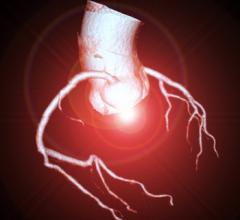
August 30, 2016 — Siemens Healthineers announced that the U.S. Food and Drug Administration (FDA) has cleared the Somatom Drive computed tomography (CT) system. This new dual-source scanner is designed to drive precision in diagnostic imaging across a wide range of clinical disciplines, from pediatrics and emergency medicine to cardiology and oncology. The system has the potential to reduce examination time, preparation and follow-up care.
The Somatom Drive CT system is equipped with the new Straton MX Sigma X-ray tubes and Sigma generators, which allow for more targeted beam focusing and enable examinations using high energy levels at low voltages. These lower voltages may allow clinicians to use less contrast, which can be burdensome for patients who are seriously ill or have reduced kidney function. And because the X-ray tube voltages are adjustable in 10 kV increments ranging from 70 to 140 kV, clinicians can tailor the voltage and, therefore, the dose to each patient. Scanning at a lower kV level reduces patient radiation exposure.
This technology helps enable CT lung scans to be performed at an extremely low dose, which could prove beneficial for lung cancer screening. With this combination of low doses and high diagnostic reliability, the Somatom Drive is also ideal for spinal diagnostics and orthopedic examinations. Additionally, the scanner’s Dual Energy mode can help clinicians accurately differentiate between tissue and bone.
The speed of the system supports pediatric CT examinations with no sedation. And the system’s Stellar Infinity detector and integrated iterative reconstruction capabilities, coupled with the use of very low kV levels, support an environment where the lowest doses are used for pediatric patients.
Elderly patients who present to the hospital with undiagnosed chest pain and breathing difficulties are among the patient populations who can benefit from the ability to breathe freely during scanning with the new system. And thanks to the system’s ultra-fast scanning speed, the patient’s heart and lung movement does not compromise diagnostic imaging quality. Further, since a cardiac scan can be performed in one heartbeat, beta-blockers may no longer be required to slow the heartbeat of some patients.
These patient benefits also may lead to smoother workflows in the radiology department. If the clinical images from the first CT scan are of diagnostic quality, multiple scans are not necessary. For most patients with reduced kidney function, a lower dose of contrast media may reduce the need for related preparation and follow-up. And since the scanner supports the potential to perform CT examinations with no sedation, anesthetic support and additional intensive medical care may not be required.
For more information: www.healthcare.siemens.com


 December 11, 2025
December 11, 2025 









